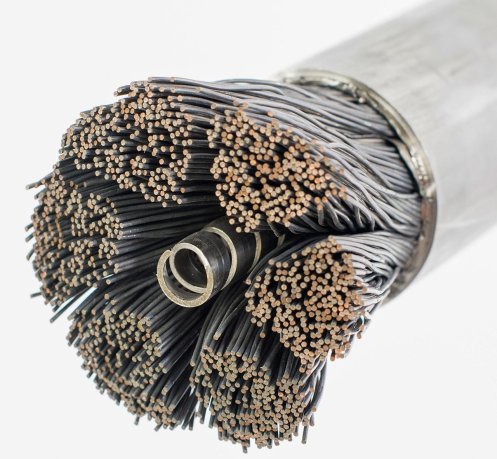
Superconductor
A material which, when cooled below a certain temperature, is capable of conducting an electric current without resistance and therefore without dissipation. The use of superconductors allows the operation of powerful electromagnets with low power consumption. When the critical temperature is reached, which is usually only a few degrees above absolute zero, the electrical resistance in the superconducting material drops and current can circulate inside the material without any dissipation of energy. In addition, external magnetic fields will not penetrate the superconductor, but remain at its surface. If the temperature rises above a critical threshold or if too strong a magnetic field is present, the superconductor will return to a resistive state.
The most commonly used superconductor is niobium-titanium. Niobium-tin can withstand higher magnetic fields but is brittle. Both require cooling to 4 K. The high-temperature superconductor Rare-earth Barium Copper Oxide exhibits superconducting properties at temperatures below 77 K.




